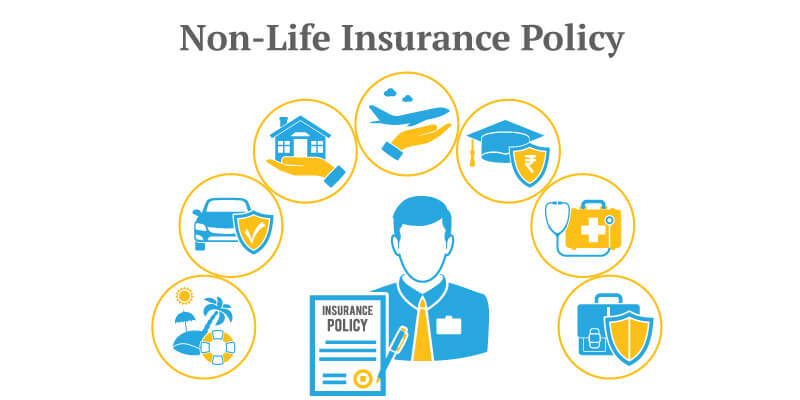Investing in insurance is a common trend that helps individuals secure financial safety and protect their health for themselves and their families against unforeseen risks in life.
However, many people still can’t distinguish between the two most common types of insurance today, which are health insurance and medical insurance. So, what are the differences and prominent advantages between these two insurance types?
Let’s compare health insurance and medical insurance in the following article to help you make a decision that suits your needs and circumstances!
I- Concepts of health insurance and medical insurance
1. What is Health Insurance?
Health Insurance (HI) is a state-applied form designed to protect participants when they encounter health or accident issues. Insured services include examinations, treatments, medications, surgeries, etc. Thanks to HI, participants can avoid expensive costs when using medical services.
2. What is Medical Insurance?
Medical Insurance is provided by life or non-life insurance companies, offering fast financial support for participants facing unforeseen health risks such as illnesses, injuries, hospitalization, surgeries, maternity, dental care, etc.
The purpose of medical insurance is to help participants minimize financial risks, as treatment and healthcare costs are currently high. It also ensures that participants receive high-quality healthcare to recover faster.
Comparing health insurance and medical insurance
Health insurance and medical insurance are both related to human health protection. However, they have distinct characteristics that you need to understand to make an appropriate choice:

3. Insurance benefits
Health insurance:
- If participants go to the right medical facilities, they will be reimbursed from 80% to 100%.
- The amount will reduce significantly, ranging from 40% to 70% if participants go to non-network facilities.
Medical insurance:
- Covers all outpatient/inpatient treatment fees, maternity, dental care, surgeries, etc., within the insurance scope and limit, regardless of network or non-network facilities.
- Participants can choose healthcare facilities according to their needs without worrying about hospital fees; they only need to present their insurance card for quick processing and payment.
- Some health insurance packages have coverage at foreign hospitals to provide better healthcare.
4. Participation fees
Health insurance:
- The HI fee is based on the basic salary according to government regulations and participants’ income. Generally, HI has a relatively low participation fee, suitable for the majority of the population.
Medical insurance:
- Designed with diverse and flexible coverage, benefits, and participation fees, ranging from hundreds of thousands to several million VND per year. This allows participants to easily choose insurance packages that match their needs and financial capabilities.
5. Insured age
Health insurance:
- No age limit for participants.
Medical insurance:
- Most medical insurance packages on the market limit coverage to ages ranging from 60 days to 65 years.
6. Operating principles
Health insurance:
- Operates as a community-based, non-profit model according to current HI laws.
Medical insurance:
- Healthcare insurance packages fall under private management and business purposes, governed by Vietnam’s Insurance Business Law.
7. Choice of healthcare facilities
Health insurance:
- Participants can only choose network facilities, and coverage is limited to the territory of Vietnam.
- Note: HI only reimburses for specified diseases and medications, excluding additional costs such as high-tech treatment or external drug purchases.
Medical insurance:
- Participants can choose private or international healthcare facilities, even those located overseas.
- Additionally, medical insurance covers outpatient/inpatient treatment fees outside of HI regulations, allowing participants to choose trusted medication brands.
8. Responsibility limit and payment fees
Health insurance:
- The maximum payment limit per year is 80% of medical expenses.
- Payment ranges from 40% to 70% based on the basic salary in the region; the maximum is 45 months of salary.
- If patients use high-tech medical services, the maximum payment is VND 58.5 million/person/year.
Medical insurance:
- The maximum annual payment limit is significantly higher, depending on the insurance contract, potentially reaching billions of VND.
9. Renewal and extension
Health insurance:
- HI is only valid for one year, requiring participants to pay premiums to continue participating.
Medical insurance:
- Medical insurance also has a one-year validity period. The difference from HI is that insurance companies will assess the participant’s claims history from the previous year to decide on exclusions or premium increases before renewing the contract.
- For supplementary insurance products with Healthcare Benefits attached to life insurance packages, they typically renew automatically each year. If the insurance company does not continue the renewal for any reason, customers will be notified in advance.
10. Participation procedures
Health insurance:
- Participants can easily join HI by going directly to the ward/township/commune People’s Committee where they reside and following the instructions of local officials.
Medical insurance:
- Participants can purchase insurance online (via applications or websites) or through agents.
11. Exclusion clauses
Health insurance:
- HI does not exclude any disease, whether pre-existing or congenital. This is also the most significant advantage of this product.
Medical insurance:
- For regular medical insurance policies, the waiting period for existing diseases/specific illnesses is one year.
II- Should you buy health insurance or medical insurance for comprehensive protection?
After understanding the two types of insurance, we also see that medical insurance provides many great benefits for participants, helping them proactively manage their finances against unforeseen risks.
However, with regular medical insurance packages, you only receive financial support when there is a health issue, without any maturity benefits, even if no insurance events occur during the contract period.
Attach supplementary health insurance when purchasing life insurance for comprehensive protection. In this case, life insurance becomes an effective savings and investment solution, helping you financially prepare for the future to build a better life. Additionally, attached health insurance ensures that you and your family receive comprehensive healthcare.
Cre: Mia/papaya.asia



